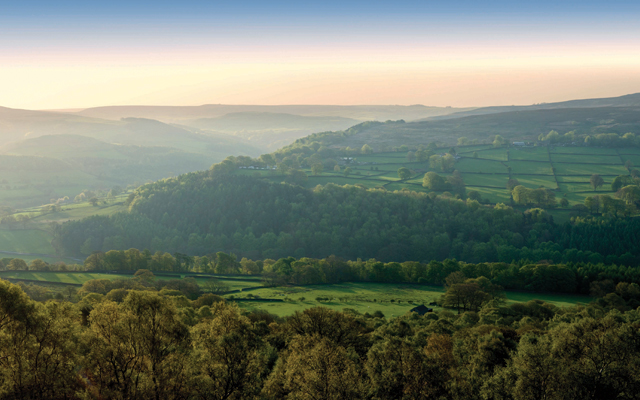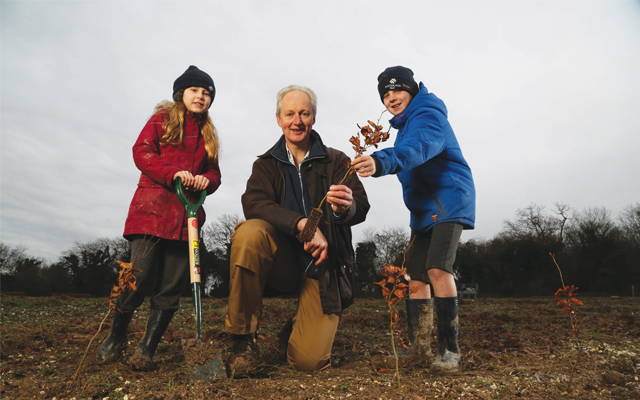The legacy of the UK’s woodland
In partnership with The Woodland TrustWhat legacy will you leave for your children and grandchildren? A landscape we can all be proud of, which works for wildlife, people, businesses and future generations

Woodlands form a cherished part of our historical and cultural identity
Trees and woods are a phenomenally important feature of our landscape and form a cherished part of our historical and cultural identity.
In the UK, 13% of our land is covered by woodland, but the European average is 37%. Irreplaceable ancient woodland—land that has been consistently wooded since at least the 1600s or 1750 in Scotland—now covers only about 2% of the UK because of past clearances for agriculture and development. This land provides important habitats for rare and vulnerable species and also often contains significant historical features. Ancient trees, trees outside woods and other woodland are all under threat and the amount of new native woodland being created is decreasing.
Factors such as climate change, pollution, pests and disease, changing land use and management practice all pose a threat to our trees. We need to make our landscapes more resilient as both urban and rural landscapes need support to absorb and recover from natural and human pressures and change.
During the 1960s and 1970s, Dutch elm disease arrived on our shores. Twenty-five million elms were destroyed by the disease and it’s expected that the effects of Chalara, or ash dieback, will be far worse. The disease is known to be present at hundreds of locations across the UK and there are an estimated 12 million mature ash trees outside woods across Britain that are now at risk from the spread.
Many wooded areas could be destroyed by the onslaught of pests and disease, such as the ash-intensive Derbyshire Dales, as well as many trees outside of woods.
The threat from tree pests and disease alone could have serious financial implications. It could destroy important wildlife habitats and negatively affect the benefits that woods provide, including better water quality, cleaner air and biodiversity. The loss of trees to disease can also affect the character of the landscape and have an impact on tourism.
Sign up for the Country Life Newsletter
Exquisite houses, the beauty of Nature, and how to get the most from your life, straight to your inbox.
What we need to do

Planting new trees will allow us to leave the legacy of a beautiful, tree-covered landscape in the UK for generations to come. To ensure the protection of whole woodlands, we need to plant a diverse mix of native tree species. It is particularly vital to plant a mix of native trees outside woods—in gardens, public spaces, hedgerows, copses and field corners—to ensure the connectivity of our landscape and the development of wildlife corridors. This mix of trees will help to mitigate loss when a species-specific disease presents itself in a wood.
Sourcing and growing trees in the UK will prevent the spread of disease from overseas and ensure that the saplings are adaptable within our climate.
Whether you’re planning to plant trees in your community, school or on your own land, you can help to create a landscape that’s strong in the face of tree disease. You will find help and advice as well as a wide range of subsidised tree-planting products at www.woodlandtrust.org.uk/plant
Visit www.woodlandtrust.org.uk/treedisease for more information and to apply for a Tree Disease Recovery Pack
-
 Two quick and easy seasonal asparagus recipes to try this Easter Weekend
Two quick and easy seasonal asparagus recipes to try this Easter WeekendAsparagus has royal roots — it was once a favourite of Madame de Pompadour.
By Melanie Johnson
-
 Sip tea and laugh at your neighbours in this seaside Norfolk home with a watchtower
Sip tea and laugh at your neighbours in this seaside Norfolk home with a watchtowerOn Cliff Hill in Gorleston, one home is taller than all the others. It could be yours.
By James Fisher